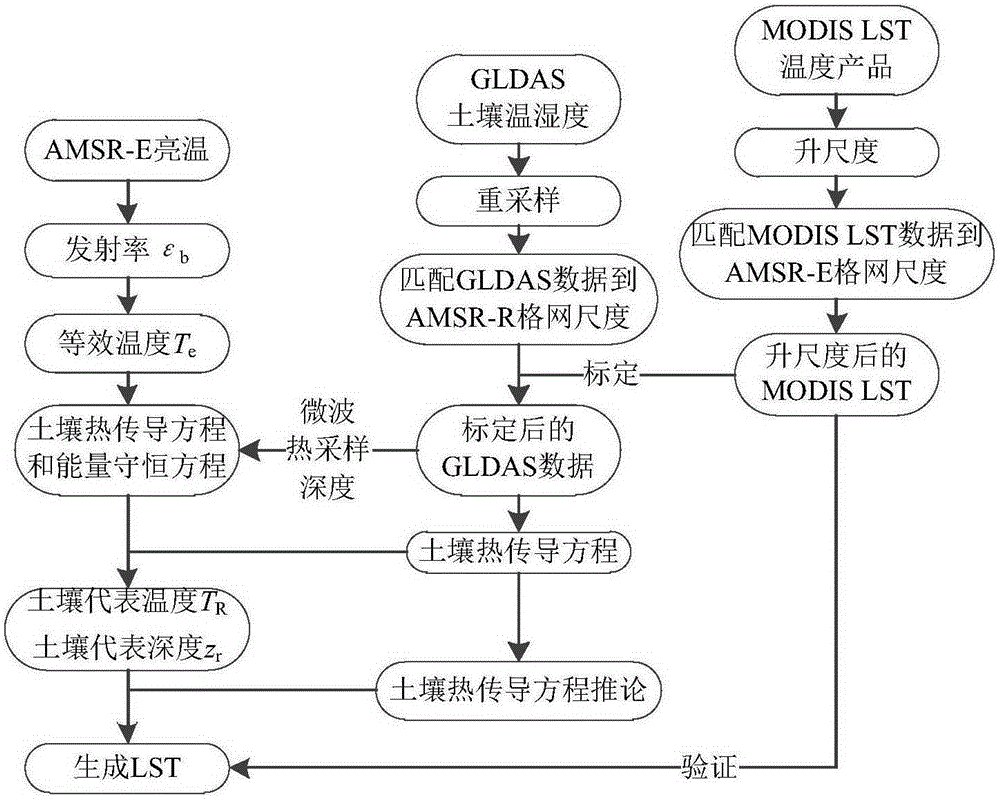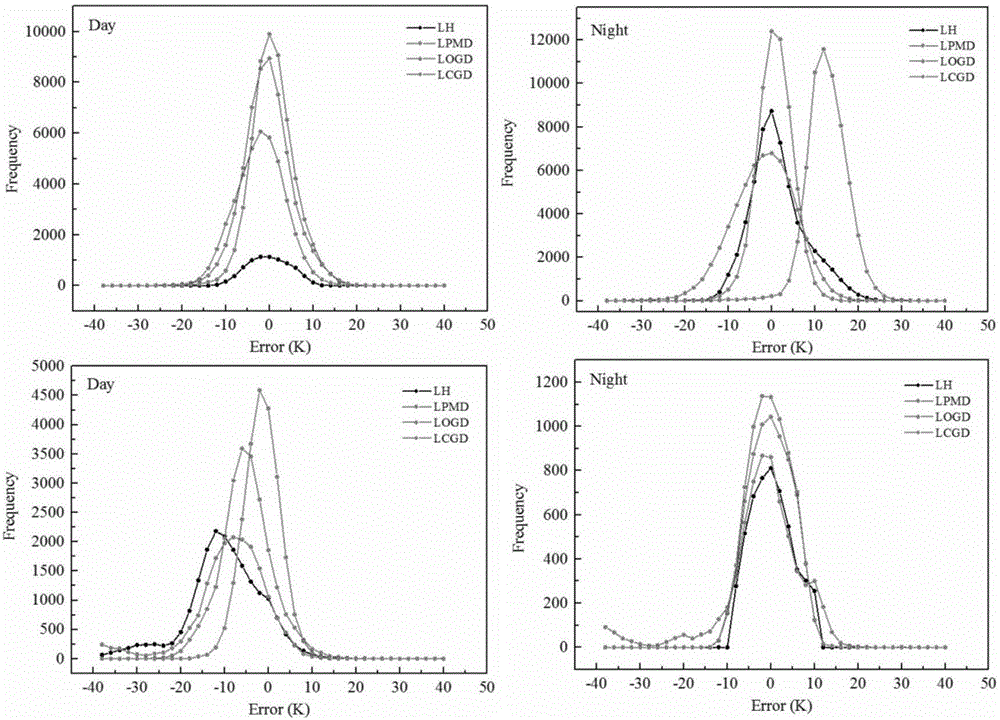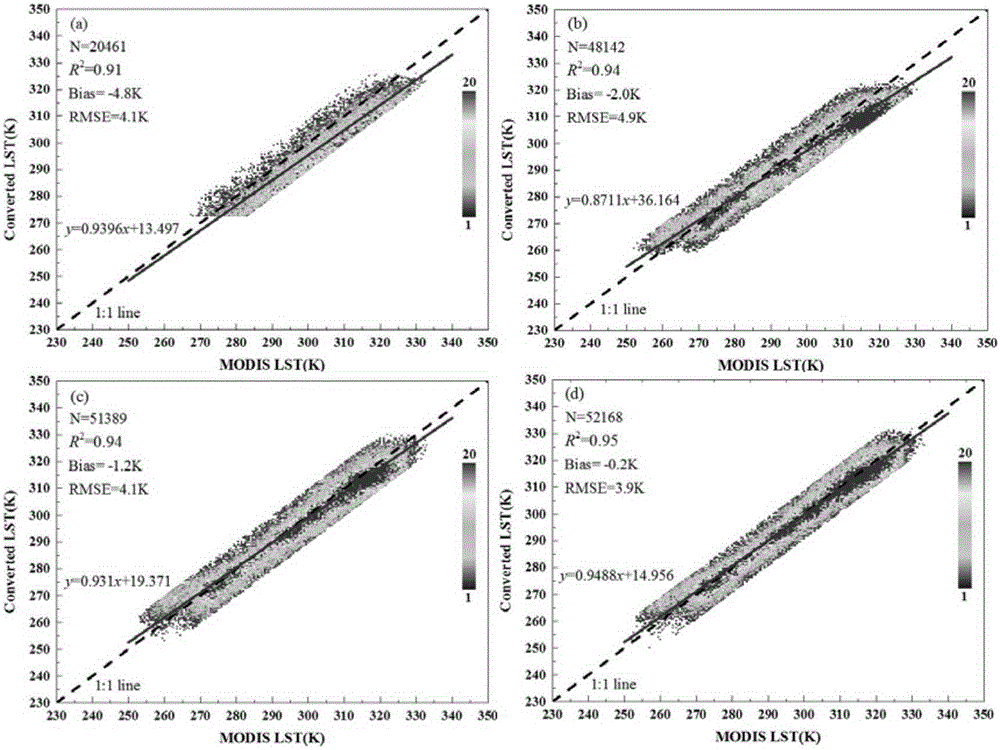Method for converting microwave remote sensing surface temperature to thermal infrared remote sensing land surface temperature
A technology for thermal infrared remote sensing and surface temperature, applied in the field of remote sensing applications
- Summary
- Abstract
- Description
- Claims
- Application Information
AI Technical Summary
Problems solved by technology
Method used
Image
Examples
Embodiment Construction
[0042] The technical solution of the present invention will be described in detail below in combination with the embodiments and the accompanying drawings.
[0043] Two typical regions were selected, namely northwest China and parts of Mongolia (98°E~103°E, 39°N~44.5°N), and western Namibia (14.5°E~16°E, 21°S~ 24°S). It is characterized in that the underlying surface is dominated by bare soil. At the same time, the climate of the two regions is arid, and the temperature difference between day and night is large. The microwave thermal sampling temperature difference is obvious, which can fully highlight the difference between the microwave surface temperature and the surface temperature. The processing flow of the present invention is as figure 1 shown.
[0044] The data sets used in this embodiment include: AMSR-E brightness temperature, MODIS surface temperature products, and GLDAS global land surface soil temperature and humidity data. It is characterized in that AMSR-E d...
PUM
 Login to View More
Login to View More Abstract
Description
Claims
Application Information
 Login to View More
Login to View More - R&D
- Intellectual Property
- Life Sciences
- Materials
- Tech Scout
- Unparalleled Data Quality
- Higher Quality Content
- 60% Fewer Hallucinations
Browse by: Latest US Patents, China's latest patents, Technical Efficacy Thesaurus, Application Domain, Technology Topic, Popular Technical Reports.
© 2025 PatSnap. All rights reserved.Legal|Privacy policy|Modern Slavery Act Transparency Statement|Sitemap|About US| Contact US: help@patsnap.com



